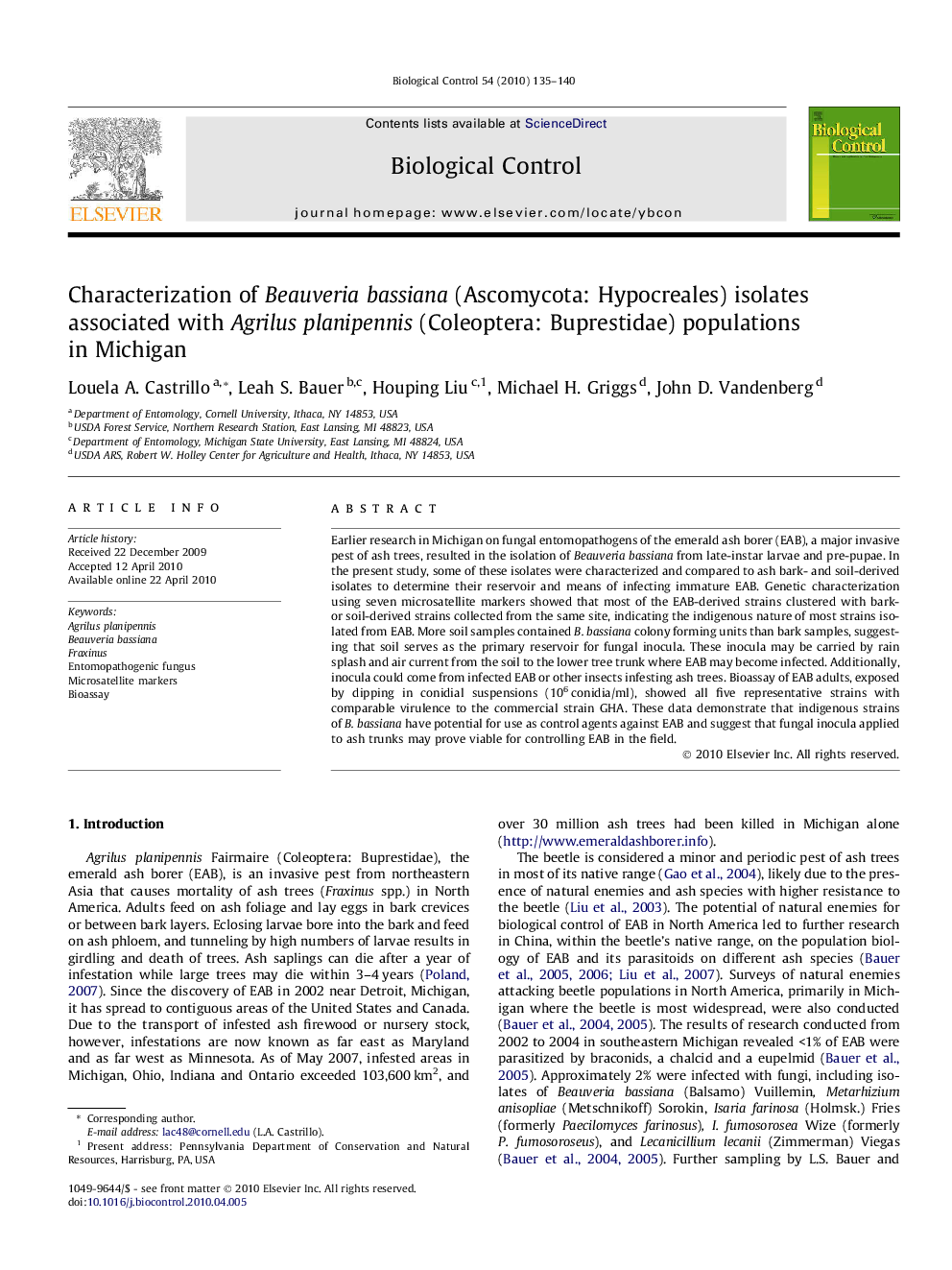| کد مقاله | کد نشریه | سال انتشار | مقاله انگلیسی | نسخه تمام متن |
|---|---|---|---|---|
| 4504353 | 1321087 | 2010 | 6 صفحه PDF | دانلود رایگان |

Earlier research in Michigan on fungal entomopathogens of the emerald ash borer (EAB), a major invasive pest of ash trees, resulted in the isolation of Beauveria bassiana from late-instar larvae and pre-pupae. In the present study, some of these isolates were characterized and compared to ash bark- and soil-derived isolates to determine their reservoir and means of infecting immature EAB. Genetic characterization using seven microsatellite markers showed that most of the EAB-derived strains clustered with bark- or soil-derived strains collected from the same site, indicating the indigenous nature of most strains isolated from EAB. More soil samples contained B. bassiana colony forming units than bark samples, suggesting that soil serves as the primary reservoir for fungal inocula. These inocula may be carried by rain splash and air current from the soil to the lower tree trunk where EAB may become infected. Additionally, inocula could come from infected EAB or other insects infesting ash trees. Bioassay of EAB adults, exposed by dipping in conidial suspensions (106 conidia/ml), showed all five representative strains with comparable virulence to the commercial strain GHA. These data demonstrate that indigenous strains of B. bassiana have potential for use as control agents against EAB and suggest that fungal inocula applied to ash trunks may prove viable for controlling EAB in the field.
Journal: Biological Control - Volume 54, Issue 2, August 2010, Pages 135–140